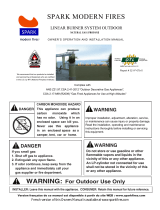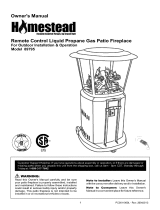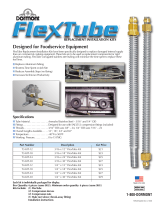
www.fmiproducts.com
125343-01A2
SAFETY
-
service or maintenance can
and maintenance instructions
-
known to the state of California
-
-
Early signs
of carbon monoxide poisoning resemble the
u, with headaches, dizziness or nausea. If
you have these signs, the heater may not
be working properly. Get fresh air at once!
Have heater serviced. Some people are
more affected by carbon monoxide than oth-
ers. These include pregnant women, people
with heart or lung disease or anemia, those
under the inuence of alcohol and those at
high altitudes.
Natural and
propane/LP gases are odorless. An odor-
making agent is added to the gas. The odor
helps you detect a gas leak. However, the
odor added to the gas can fade. Gas may be
present even though no odor exists.
Make certain you read and understand all
warnings. Keep this manual for reference. It
is your guide to safe and proper operation of
this replace.
this heater or its controls can
-
-
away from hot surfaces to avoid
-
-
dren when they are in the area
hand-held remote accessory,
TAbLE OF CONTENTS
Safety .................................................................. 2
Local Codes......................................................... 3
Product Features ................................................. 4
Locating Fireplace ............................................... 4
Product Specications ......................................... 4
Installation ........................................................... 5
Operation ........................................................... 12
Inspecting Burners............................................. 13
Cleaning and Maintenance ................................ 14
Specications .................................................... 15
Wiring Diagram .................................................. 15
Replacement Parts ............................................ 16
Service Hints ..................................................... 16
Technical Service............................................... 16
Accessories ....................................................... 16
Troubleshooting ................................................. 17
Parts .................................................................. 20
Warranty ..............................................Back Cover
























